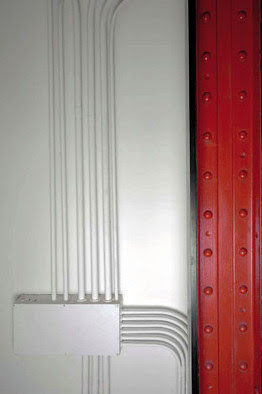 |
| Photograph by Todd Eberle Source: The WSJ |
 |
| Photograph by Todd Eberle Source: The WSJ |
The design was to emphasize three components of architecture during that time: honesty of materials, transparency of forms and the use of "industrial" materials and fixtures throughout the house while using traditional style of decor.
Built between 1928 - 1932, Paris' Glass House is a design of early modern architecture. The main materials used? Duh, glass! Glass panels, glass blocks, and steel were the main culprits.
It was built in collaboration with Pierre Chareau, Bernard Bijvoet and Louis Dalbet for the then renowned physician: Dr. Jean Dalsace (Brigitte Bardot was one of his patient).
 |
| Photograph by Todd Eberle. The main living area. Source The WSJ |
Currently, the house is being restored to its original form. He has documented everything and is currently searching for the house's original theatrical light that once lit the outside.
Source: The WSJ & The New York Times
 |
| Photo: Todd Eberle Electrical conduits and structural columns. Source The WSJ |
"It relates to my interest to originality. Things that are original have personality and a sense of
accrued time that you can see for yourself."
- Robert Rubin (owner) to The WSJ, referring to the artful layers of the house.
 |
| Photo: Mark Lyon The grand salon. Source: The New York Times |
 |
| Photo: Mark Lyon Bathroom with removeable panels. Source The New York Times |
 |
| Photo: Mark Lyon Passage over looking garden. Source The New York Times |
 |
| Photo: Mark Lyon Staircase wrapped by series of screens. Source Thew New York Times |
Source: The WSJ & The New York Times





























